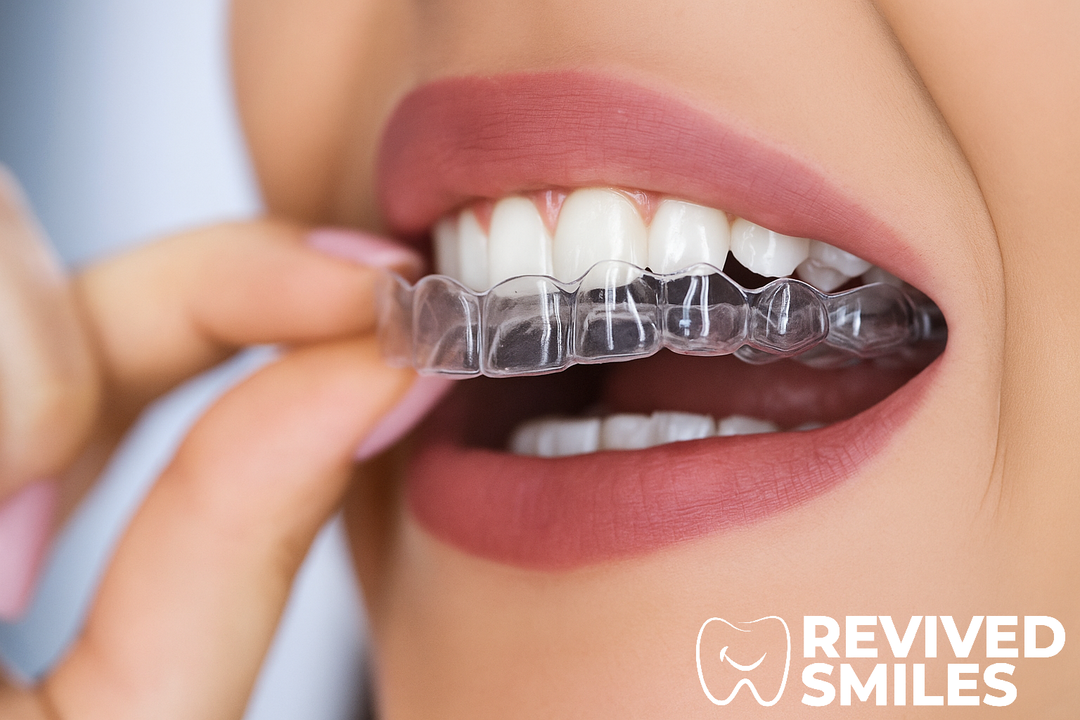Handmade Dentures vs. 3D Printed Dentures: Which One is Right for You?

A great smile can do wonders for confidence and dentures help people get back their smile and eat and speak comfortably. If you’re looking at dentures, you must have come across two options: handmade dentures and 3D printed dentures.
With dental technology advancing so fast, the debate of which one is better has been ongoing. Some swear by the artistry and precision of handmade dentures while others love the speed and accuracy of digital dentures. But which one is right for you? Let’s look at both to help you make the best decision for your oral health.
What are Dentures?
Dentures are removable dental appliances that replace missing teeth in the upper jaw, lower jaw or both. Crafted by skilled dental technicians, these prosthetics can be made from various materials including acrylic, resin, nylon, metal and porcelain.
The main goal of dentures is to restore the function and appearance of natural teeth so people can eat, speak and smile with confidence.
Besides replacing missing teeth, dentures play a crucial role in supporting facial structure which can prevent the sunken look that comes with tooth loss. They also help with speech and overall oral health by keeping the remaining teeth in alignment and preventing further dental problems.
Custom made to fit an individual’s unique oral anatomy, dentures ensure a comfortable and secure fit and enhance the quality of life for those who wear them.
Types of Dentures
There are several types of dentures available, each designed to meet specific needs and preferences. Knowing the differences will help you choose the best option for your situation:
-
Complete Dentures: These dentures replace all teeth in either the upper or lower jaw or both. Ideal for those who have lost all their natural teeth.
-
Partial Dentures: Designed to replace some but not all teeth in the upper or lower jaw, partial dentures are anchored to the remaining natural teeth providing a stable and functional solution.
-
Immediate Dentures: Placed in the mouth immediately after tooth extraction, immediate dentures allow patients to have teeth during the healing period. They may need adjustments as the gums and bone heal and reshape.* Snap-in Dentures: Also known as implant supported dentures, these attach to dental implants embedded in the jawbone. Snap-in dentures provide more stability and are less likely to shift or slip.
-
Overdentures: These dentures sit on the gums but are anchored by dental implants, providing a secure fit and better chewing efficiency.
-
Economy Dentures: A more affordable option, economy dentures may not have the same comfort or durability as custom dentures but can be a good choice for those on a budget.
-
Custom Dentures: Tailored to an individual’s unique oral anatomy, custom dentures ensure a precise fit and optimal comfort. Made from high quality materials and attention to detail, they provide a natural look and feel.
What are Handmade Dentures?
Handmade dentures are crafted by skilled dental technicians using traditional methods. The process starts with taking a physical mold of your mouth, which is then used to create a wax model.
Once the fit is perfect, the final dentures are made from high quality materials and hand adjusted. Conventional dentures require more appointments and may have alignment issues compared to 3D printed dentures.
These dentures are fully customized, offering a personalized fit and a natural looking smile. Many people choose handmade dentures because of the artistry and attention to detail.
Why People Choose Handmade Dentures
-
Superior Customization: Every detail, from gum color to tooth shape, is tailored to look as natural as possible.
-
Expert Craftsmanship: Skilled technicians handcraft each denture with precision and care.
-
Ideal for Complex Cases: If you have an irregular bone structure, remaining natural teeth or unique oral anatomy, handmade dentures offer more flexibility for adjustments.
-
Enhanced Durability: Handmade dentures often use high quality acrylics and materials that can withstand wear and tear over time.
-
Personalized Adjustments: Adjustments and refinements can be made throughout the process to ensure an ideal fit.
-
Works with Partial Dentures: Handmade dentures can be customized to work with remaining teeth, whether for a complete or partial denture, for a more natural feel.
What Are 3D Printed Dentures?
3D printed dentures are made using digital technology, a faster and more efficient way to create dental prosthetics. The process starts with digital scans of your mouth, used to create a virtual model. Once approved, the dentures are printed using biocompatible materials and finished with fine-tuned adjustments.

This modern approach means quick production, precise fitting and a streamlined manufacturing process. Traditional dentures often have limitations in fit and production time compared to 3D printed dentures.
Why People Choose 3D Printed Dentures
-
Fast and Easy: The whole process is much quicker than traditional denture-making.
-
More Affordable: Fewer appointments and less manual labor involved means 3D printed dentures are more cost effective.
-
Accurate Fit: Digital scanning and modeling ensures precision and consistency.
-
Advanced Materials: Some 3D printed dentures use high performance resins that provide flexibility and strength.
-
Minimal Human Error: Since the dentures are made from digital models, there’s less room for errors in the final product.
-
Immediate Dentures: If you need an instant solution to replace missing teeth, 3D printing allows for a quick turnaround time.
-
Full Denture Production: 3D printed dentures can produce a full denture, replacing an entire arch of missing teeth with precision.
Handmade Dentures vs 3D Printed Dentures: Key Differences
When choosing between handmade and 3D printed dentures, consider the most important factors. The choice between these options also depends on how many teeth need to be replaced, full or partial denture required.
Customization and Fit
Handmade dentures offer more detailed adjustments and artistic customization, a highly personalized fit. 3D printed dentures while precise, rely on digital impressions and may not have the same level of handcrafted refinement.
Time and Convenience of Immediate Dentures
Handmade dentures require multiple visits over several weeks to get the perfect fit. 3D printed dentures can be produced in just a few days, ideal for those who need a quick solution.
Cost
Due to the labor involved, handmade dentures are more expensive. 3D printed dentures benefiting from automation are more affordable and require fewer adjustments. Check our detailed post on dentures cost.
Durability and Longevity
Both use high quality materials but handmade dentures may last longer with proper care since they allow for detailed refinements that enhance their durability. 3D printed dentures however continue to evolve with stronger more resilient materials being developed.
Full and Partial Denture Comfort
A well-made handmade denture is often more comfortable because adjustments are done manually with attention to pressure points. 3D printed dentures however offer a highly accurate digital fit that minimizes common discomforts.
Dental Implants and Implant Supported Dentures
For those looking for permanent dentures, both handmade and 3D printed dentures can be used with implant supported dentures. However 3D printed dentures provide a more precise fit when working with dental implants.
Dental Technology Advancements
Advances in dental technology have changed the way dentures are made and fitted, offering significant improvements in comfort, appearance, and functionality. One of the biggest advancements is the digital dentures.
Using computer-aided design (CAD) software, dental professionals can create precise custom-made dentures that fit and look natural. This process streamlines the production time and effort for high quality dentures.
3D printing technology has also made it possible to create dentures with complex geometries and customized features. This allows for production of dentures that are not only more accurate but also more durable and aesthetically pleasing.
High performance resins and other advanced materials used in 3D printed dentures provide flexibility and strength making them a reliable option for those with missing teeth.
These advancements have improved the overall quality and fit of dentures making them a more viable and attractive option for those looking to replace missing teeth.
Whether you choose traditional handmade dentures or modern 3D printed ones, the latest dental technologies have solutions for various needs and preferences.
Who Should Choose Handmade Dentures?
Handmade dentures might be best for:
-
Those who want the most customized, natural looking result.
-
People with unique dental structures or complex oral needs.
-
Anyone who values traditional craftsmanship and long term durability.
-
Patients willing to invest more time and money for a premium, personalized fit.
-
Individuals who may need multiple adjustments for maximum comfort.
-
Those considering full dentures but want handcrafted detail.
Who Should Choose 3D Printed Dentures?
3D printed dentures might be best for:
-
Patients who need a quick and affordable denture solution.
-
Those who prefer digital accuracy and a streamlined process.
-
Individuals looking for a modern denture approach.
-
People who want a precise fit with minimal manual adjustments.
-
Patients with straightforward dental needs who don’t need extensive customization.
-
Those considering snap-in dentures or digital dentures that integrate with existing dental implants.
-
Patients who want to avoid multiple appointments that conventional dentures require.
Cost
Costs vary depending on materials, customization, and complexity. Handmade dentures range from $1,500 to $3,500 and 3D printed dentures from $1,000 to $2,500. Many dental insurance plans cover part of the cost so always check with your provider.
Additional cost factors to consider:
-
Material Choice: Premium materials for handmade dentures add up.
-
Adjustment Fees: Handmade dentures often require more fittings.
-
Technology Advances: As 3D printed dentures improve, prices will change.
-
Dental Insurance: Coverage varies so verify with your provider.
-
Denture Adhesive: Some patients may need denture adhesive for a secure fit especially with conventional dentures.
-
Complete vs Partial Dentures: Costs differ if you need a full set or partial dentures for remaining natural teeth.
Conclusion: Which Dentures Are Right for You?
Both handmade and 3D printed dentures have their own advantages. If you want craftsmanship, customization and durability, handmade dentures might be your best choice. If you prefer speed, affordability and digital precision, 3D printed dentures could be the way to go.
Ultimately it comes down to your personal needs, budget, and preferences. If you need intricate adjustments or have unique dental structure, handmade dentures may be a better fit. If you want a quick, cost effective and digital solution, 3D printed dentures are a good option.
So how to decide? Consult a dental professional. They can assess your needs, lifestyle, and budget to help you find the dentures that will keep you smiling confidently for years to come.





Leave a comment